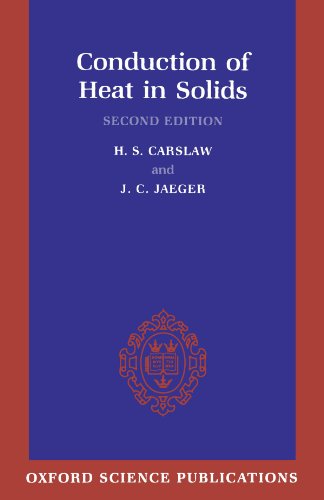Conduction of Heat in Solids pdf free
Par martin james le vendredi, juin 24 2016, 03:11 - Lien permanent
Conduction of Heat in Solids by H. S. Carslaw, J. C. Jaeger


Conduction of Heat in Solids H. S. Carslaw, J. C. Jaeger ebook
Publisher: Oxford University Press, USA
ISBN: 0198533683, 9780198533689
Format: djvu
Page: 517
Heat spontaneously tends to flow from a body at a higher temperature to a body at a lower temperature. Conduction takes place in all forms of ponderable matter, such as solids, liquids, gases and plasmas. Conduction Heat transfer always takes place by areas of high heat energy migrating to areas of. Such bad conductors of heat are called insulators. Transfer of heat within a fluid is by convection. Strictly speaking, in fluids the transfer of energy through Brownian motion is called diffusion. Let's talk about heat – solids, liquids, and gases are made up of molecules. Transfer of heat in solids is by conduction. Convection; that is, the transfer of heat from one place to another through the movement of fluids or gases. Conduction Firefighter Conduction. The governing equation for heat transfer by conduction is: Conduction Equation. There is a simple solution, but first let's learn a little about heat conduction: 1. Conduction; that is, heat being transferred from a heated solid to an unheated solid. Heat from the part of the system to another part of or by a system to another of the system that heat conduction phenomenon. Because molecules are farther apart in gases than in solids, the gases are much poorer conductors of heat. Actually 'conduction' is heat transfer in solids, such as metals. Conduction is heat transfer within solids or between contacting solids. Liquids: Most of the liquids transfer heat very well. Heat transfer heat transfer is one of three basic styles. Convection is the name for a means of heat transfer, as distinguished from conduction and radiation. It is also a term that describes processes affecting the atmosphere, waters, and solid earth.